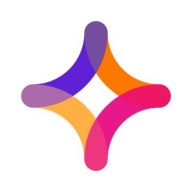

Jitterbit Harmony and AWS Database Migration Service are products in the integration and migration category. AWS Database Migration Service tends to have the upper hand due to its superior features, although Jitterbit Harmony is favored for its pricing and support.
Features: Jitterbit Harmony provides a range of integration capabilities, automation features, and transformation tools, making it ideal for connecting various applications. AWS Database Migration Service offers notable scalability, reliability, and diverse support for database migrations, aiming at comprehensive migration solutions.
Room for Improvement: Jitterbit Harmony could enhance its scalability and expand its support for more complex migrations. It might also improve its documentation and user interface for less technical users. AWS Database Migration Service could benefit from simplifying its setup process and improving pricing transparency. It might also enhance features for real-time data synchronization.
Ease of Deployment and Customer Service: Jitterbit Harmony is known for its easy deployment and responsive customer service, facilitating a quicker setup time. AWS Database Migration Service, although more complex, is supported by extensive documentation and a vast global support network.
Pricing and ROI: Jitterbit Harmony is competitively priced, emphasizing quick ROI through effective integrations, appealing to cost-conscious buyers. AWS Database Migration Service may require higher initial investments but promises significant long-term ROI through its extensive feature set and performance.


AWS Database Migration Service, also known as AWS DMS, is a cloud service that facilitates the migration of relational databases, NoSQL databases, data warehouses, and other types of data stores. The product can be used to migrate users' data into the AWS Cloud or between combinations of on-premises and cloud setups. The solution allows migration between a wide variety of sources and target endpoints; the only requirement is that one of the endpoints has to be an AWS service. AWS DMS cannot be used to migrate from an on-premises database to another on-premises database.
AWS Database Migration Service allows users to perform one-time migrations, as well as replications of ongoing changes to keep sources and targets in sync. Organizations can utilize the AWS Schema Conversion Tool to translate their database schema to a new platform and then use AWS DMS to migrate the data. The product offers cost efficiency as a part of the AWS Cloud, as well as speed to market, flexibility, and security.
The main use cases of AWS Database Migration Service include:
AWS Database Migration Service Components
AWS Database Migration Service consists of various components which function together to achieve users’ data migration. A migration on AWS DMS is structured in three levels: a replication instance, source and target endpoints, and a replication task. The components include the following actions:
AWS Database Migration Service Benefits
AWS Database Migration Service offers its users a wide range of benefits. Among them are the following:
Reviews from Real Users
Vishal S., an infrastructure lead at a computer software company, likes AWS Database Migration Service because it is easy to use and set up.
Vinod K., a data analyst at AIMLEAP, describes AWS DMS as an easy solution to save and extract data.
Jitterbit Harmony is a comprehensive platform for data integration and API management, enabling seamless synchronization and automation across cloud-based and on-premises applications.
Users leverage Jitterbit Harmony to integrate systems like ERP and CRM applications, simplifying complex data workflows and enhancing automation. It supports efficient data migration and ensures smooth connectivity, handling diverse integration needs and helping streamline business processes. Users emphasize its drag-and-drop functionality and extensive templates, which contribute to its robust performance. However, improvements are needed in data mapping, error message clarity, and documentation, especially when dealing with large data volumes.
What are the key features of Jitterbit Harmony?Companies across retail, manufacturing, healthcare, and finance sectors use Jitterbit Harmony to integrate critical applications and automate workflows. In retail, it connects inventory systems with sales platforms, reducing manual effort. Manufacturers sync their ERP systems with supply chain software, optimizing operations. Healthcare organizations integrate patient management systems with insurance databases, streamlining patient care. Financial institutions use it to connect accounting software with banking systems, ensuring real-time financial data exchange.
We monitor all Cloud Data Integration reviews to prevent fraudulent reviews and keep review quality high. We do not post reviews by company employees or direct competitors. We validate each review for authenticity via cross-reference with LinkedIn, and personal follow-up with the reviewer when necessary.